Good marketing is vital for building a solid reputation and connecting with patients in the ever-shifting healthcare field. In this blog, we’ll look at healthcare-specific marketing tools, methods, and trends. We’ll analyze healthcare marketing from traditional to digital strategies, highlighting its unique aspects compared to other industries.
The Role of Marketing in the Evolving Healthcare Industry
Marketing plays a vital role in the healthcare industry, going beyond just attracting patients. It encompasses building trust, communicating value, and establishing a strong brand identity. As the healthcare landscape evolves, marketing has become even more critical for healthcare providers to stay competitive and meet patient expectations. By focusing on personalized patient experiences, healthcare providers can ensure better patient outcomes and loyalty.
Embracing Modern Strategies to Connect with PatientsIn the digital age, patients are increasingly turning to the internet to research healthcare options and connect with providers. Healthcare providers need to embrace modern marketing strategies to effectively reach and engage with patients. Let’s explore some essential modern marketing tools for the healthcare industry. Content Marketing and Blogging: Establishing Trust and ExpertiseContent marketing and blogging are powerful tools for healthcare providers to showcase their expertise, educate patients, and build trust. By creating valuable and informative content, healthcare organizations can position themselves as thought leaders and reliable sources of medical information. Whether it’s blog posts, articles, or e-books, engaging content can attract and retain patients. Social Media Marketing: Strengthening Online Presence and EngagementSocial media helps healthcare providers connect with patients. Sharing tips, stories, and interactive content boosts their online presence and personalizes interactions. Platforms also address patient queries promptly. Search Engine Optimization (SEO): Ranking Higher on Search EnginesHealthcare providers aim for better online visibility on search engines to attract patients seeking medical services. Healthcare SEO, patient-focused content, and strategic design enhance this presence. Local healthcare SEO and medical digital marketing further boost engagement. Implementing Medical SEO strategies elevates practice ranking and conversion rates, creating a strong online healthcare ecosystem. Email Marketing: Nurturing Patient RelationshipsEmail marketing remains a powerful tool for nurturing patient relationships. By sending personalized and relevant content to patients, healthcare providers can stay connected and provide valuable health-related information. Email campaigns can include newsletters, appointment reminders, health tips, and exclusive offers. Online Reviews and Reputation Management: Influencing Patient PerceptionsHealthcare’s landscape thrives on online reviews and reputation management. Positive reviews draw in patients, while negative ones can deter them. By actively addressing feedback, providers shape a positive brand image and foster trust. Strategies like patient engagement, handling negative reviews, and constant improvement efforts enhance healthcare’s online credibility and reputation. Unique Approaches to Marketing in HospitalsHospitals face unique marketing challenges compared to other healthcare providers. They cater to a diverse patient base, and their marketing strategies need to be patient-centric and community-focused. Patient-Centric Approach: Building Trust and LoyaltyHospitals focus on patients with patient-centered marketing. They care about patients’ needs and experiences, which builds trust and loyalty. They provide personalized care and stay connected, making patients happy and creating strong relationships. Educational Events and Workshops: Empowering the CommunityHosting educational events and workshops not only benefits the community but also helps hospitals establish themselves as community leaders in healthcare. By offering valuable information and resources, hospitals can empower the community to make informed healthcare decisions. Collaboration with Healthcare Professionals: Mutual Referrals and Reputation EnhancementCollaborating with other healthcare professionals can be mutually beneficial. By referring patients to specialists and vice versa, hospitals can ensure comprehensive patient care. Additionally, these collaborations can enhance the reputation and credibility of both parties involved. Future Trends in Healthcare MarketingAs technology advances and patient preferences evolve, healthcare marketing is continuously changing. Let’s explore some of the future trends that will shape the healthcare marketing landscape. Virtual Care: Adapting to Patients’ PreferencesVirtual care has gained significant popularity, especially after the pandemic. Healthcare providers need to embrace these technologies to meet patients’ preferences for remote consultations and medical services. Personalization and Data-Driven Marketing: Enhancing Patient EngagementPersonalized marketing messages and data-driven strategies can significantly enhance patient engagement. By analyzing patient data and tailoring messages to individual needs, healthcare providers can deliver more relevant and effective marketing campaigns. Influencer Marketing in Healthcare: Leveraging Trust and ExpertiseUsing influencers in healthcare is a big trend and optional as well. Medical pros and patient advocates are top influencers. Teaming up with them builds trust and spreads the word. Healthcare influencer plans use their know-how to back healthcare brands and educate patients. Social media healthcare influencers boost credibility and make the brand known. The 5 P’s of Healthcare MarketingHealthcare marketing uses a plan called the 5 P’s. This fits healthcare uniquely. They promote, price, place, and make patient experiences better. They also fix processes and care about people to show their brand. They focus on certain groups and stand out. They study markets and what people like. They also use digital ways to talk to people about healthcare. Product (Services): Communicating Value to Attract PatientsIn healthcare, the product refers to the medical services offered. Healthcare providers need to effectively communicate the value of their services to attract patients. Emphasizing the benefits, outcomes, and patient-centric approach can help differentiate services from competitors. Price (Affordability and Transparency): Fostering Trust through Clear Pricing & CoverageTransparency in pricing is crucial in healthcare marketing. Patients need to know what to expect financially, fostering trust and avoiding unpleasant surprises. Affordable and transparent pricing options or payment plans can also attract more patients. Convenient acccess to information on accepeted insurance plans and coverage makes it easier on the patient to evaluate if a physician office is a good fit for them. Place (Accessibility and Convenience): Ensuring Convenient Access to ServicesPlace refers to the accessibility and convenience of healthcare services. Healthcare providers should focus on offering multiple locations, convenient appointment scheduling, and telemedicine options to cater to diverse patient needs. Promotion (Marketing Communication): Reaching the Target AudiencePromotion means telling the right people or audience about things using different ways. In healthcare, they should use both old-fashioned and online methods to talk to patients and the community. Patient (Patient-Centric Approach): Prioritizing Patient Needs and ExperienceThe patient is at the core of the healthcare marketing strategy. Prioritizing patient needs, experiences, and satisfaction is essential for building long-lasting relationships and creating a positive brand image. Crafting an Effective Healthcare Marketing StrategyTo make healthcare marketing work, you need to do good research and find special things about your services. Know your audience and strategy. Then, see how well it worked and learn from it. Market Research and Analysis: Understanding the Target AudienceMarket research is the foundation of any successful marketing strategy. Understanding the target audience’s needs, preferences, and pain points can help healthcare providers tailor their messages effectively. Identifying Unique Selling Points (USPs): Setting Healthcare Providers ApartIdentifying and highlighting unique selling points can help healthcare providers stand out in a competitive market. Whether it’s specialized services, advanced technology, or exceptional patient care, USPs can attract patients seeking specific solutions. Defining Target Audience: Tailoring Messages for Better OutreachSegment the target audience by demographics, behaviors, and where they live helps healthcare providers send messages that fit each group. This way, the marketing feels right to everyone. Multi-Channel Marketing: Reaching a Diverse AudienceBy using a mix of marketing channels like social media, email, search engines, and offline ads, healthcare providers can connect with a wide audience. Measuring and Evaluating Results: Ensuring Alignment with ObjectivesMeasuring the success of marketing campaigns and evaluating the results is essential to determine their effectiveness. Analyzing key performance indicators (KPIs) can help healthcare providers make data-driven decisions and refine their marketing strategies. Understanding Healthcare Marketing SegmentsHealthcare marketing divides people into groups based on different things. This makes marketing campaigns more specific and fitting for each group. Demographic Segmentation: Tailoring Messages Based on CharacteristicsDemographic segmentation considers factors such as age, gender, income, education, and occupation. By understanding these characteristics, healthcare providers can tailor marketing messages to specific groups. Behavioral Segmentation: Customizing Marketing for Patient PreferencesBehavioral segmentation focuses on patients’ behaviors, such as their engagement with healthcare content, appointment frequency, and treatment compliance. Customizing marketing strategies based on these behaviors can improve patient engagement and satisfaction. Geographic Segmentation: Localizing Efforts for Specific AreasGeographic segmentation allows healthcare providers to tailor marketing efforts to specific geographic locations. This approach is especially beneficial for targeting patients in specific regions or neighborhoods. The 4 P’s in HealthcareApart from the traditional marketing 4 P’s, healthcare marketing incorporates additional elements that are unique to the industry. People (Patients and Staff): Providing Exceptional Care and SupportHealthcare providers need to prioritize providing exceptional care and support to both patients and staff. Satisfied and well-cared-for staff can contribute to a positive patient experience. Processes (Medical Procedures): Optimizing Efficiency for Better Patient ExperienceEfficient medical processes are vital in healthcare marketing. Streamlining medical procedures and administrative tasks can enhance the overall patient experience. Physical Evidence (Facilities and Environment): Creating a Welcoming AtmosphereCreating a welcoming and comforting environment within healthcare facilities can positively influence patient perceptions and experiences. Patient Perception (Satisfaction and Reputation): Building Trust and Brand ReputationPatient satisfaction and reputation management play a crucial role in healthcare marketing. Positive patient experiences and reviews can attract more patients and foster trust in the brand. Clinical Marketing: Targeting Healthcare ProfessionalsClinical marketing focuses on targeting other healthcare professionals, such as referring physicians and medical specialists. Building Referral Networks: Driving Patient ReferralsBuilding strong referral networks with other healthcare professionals can drive patient referrals to hospitals and specialists, benefiting all parties involved. Showcasing Clinical Expertise: Establishing Credibility through PublicationsBy showcasing clinical expertise through publications, research papers, and medical conferences. Educating Referral Sources: Promoting the Value of Clinical ServicesEducating referral sources about the value and benefits of clinical services can encourage them to refer more patients. Unique Aspects of Healthcare MarketingHealthcare marketing has unique aspects that require special attention and consideration. Ethical Considerations: Adhering to Guidelines for Patient Well-BeingHealthcare providers must adhere to strict ethical guidelines and prioritize patient well-being and privacy in all marketing efforts. Emotional and Sensitive Nature: Approaching Patients with EmpathyHealthcare marketing often deals with sensitive and emotional topics. It’s essential to approach patients with empathy and understanding. Longer Decision-Making Process: Nurturing Trust for Informed DecisionsHealthcare decisions are typically more complex and involve more significant considerations. Healthcare marketing should focus on nurturing trust and providing comprehensive information to support informed decisions. Influence of Reviews and Reputation: Leveraging Patient ExperiencesPatient experiences and reviews significantly impact healthcare marketing. Positive reviews can inspire confidence in potential patients, while negative reviews can deter them. Managing reputation is crucial. ConclusionDiscover the future of healthcare tech with us. Learn how virtual care and data-driven personalization are reshaping experiences. Explore influential figures in healthcare. Unveil strategic healthcare approaches and bridge preferences across generations. Experience compassionate healthcare marketing prioritizing patient well-being. For more, visit our website www.infusion-health.com or connect at 2901 West Coast Hwy, Newport Beach, CA 92663.
|
|
|


